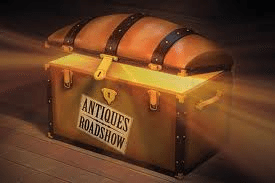Thanks to all the blog faithful who responded about last week’s thoughts about “real” value in autographs.
It was not my intent to demonize this PBS staple. It’s great that people are interested in the backgrounds of their collectibles. I’ve hoped that more people would want to know who signed their baseballs, not just how many autographs are in the collection.
With that said, I wanted to add one comment and make one vow:
First, I’ve never disagreed with some collector who wants to keep quiet that he’s harboring a rare, exclusive autograph collection that could be worth zillions. I understand the fear that too much publicity could risk the security of valued memorabilia.
My problem? I’d be the person on Antiques Roadshow who hears the huge appraisal then poo-poos:
“That’s great. But I don’t care. I’d never sell it, no matter the price.”
I’ve imagined the director grimacing. “Get me more mercenary collectors!”
Meanwhile, I’ve hoped this blog would offer an alternative example for collectors. It’s my goal, even my hope, that you’ll see what I think real value is. I’d love to see all collectors bragging about the personal response they received from a retiree, how the reply exceeded all their expectations. Let the coin and stamp collectors brag about their net worth.
I take pride in finding former players who are fellow fans. Kohei Nirengi, my friend in Japan, notes in his letters that he believes that baseball is “the most beautiful game.” His sincere belief gets many letters of agreement and congratulations.
The best “autographs” in my collection today aren’t the rarest or signed by the most famous. The correspondence I’ve kept shows that my past memories of baseball are appreciated today. The response shows that I, as a fan, matter. No price guide can give me that.
Coming Friday: a Virgil Trucks update

